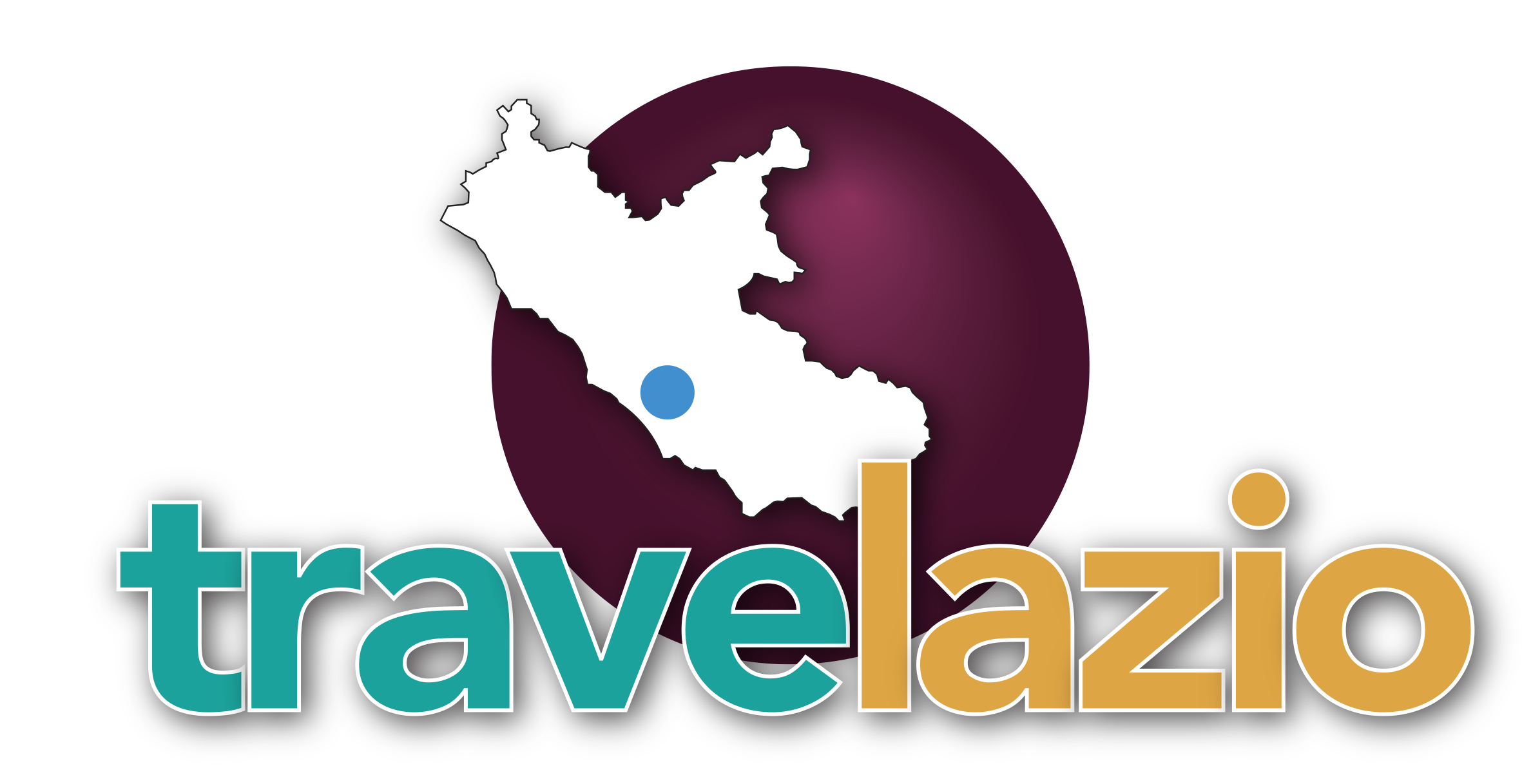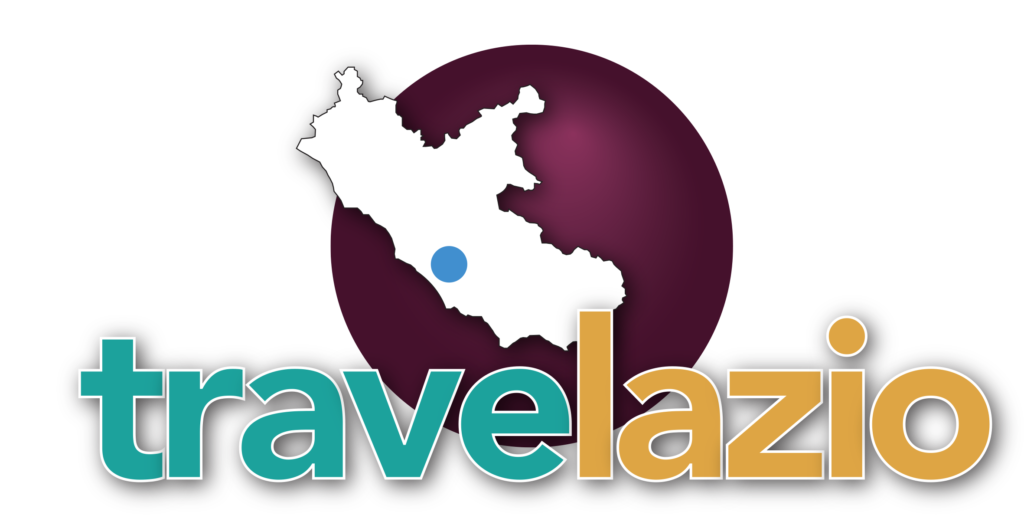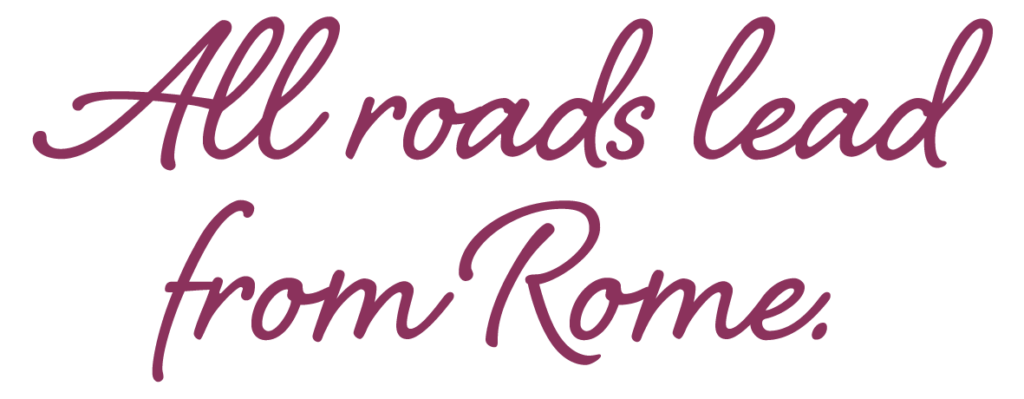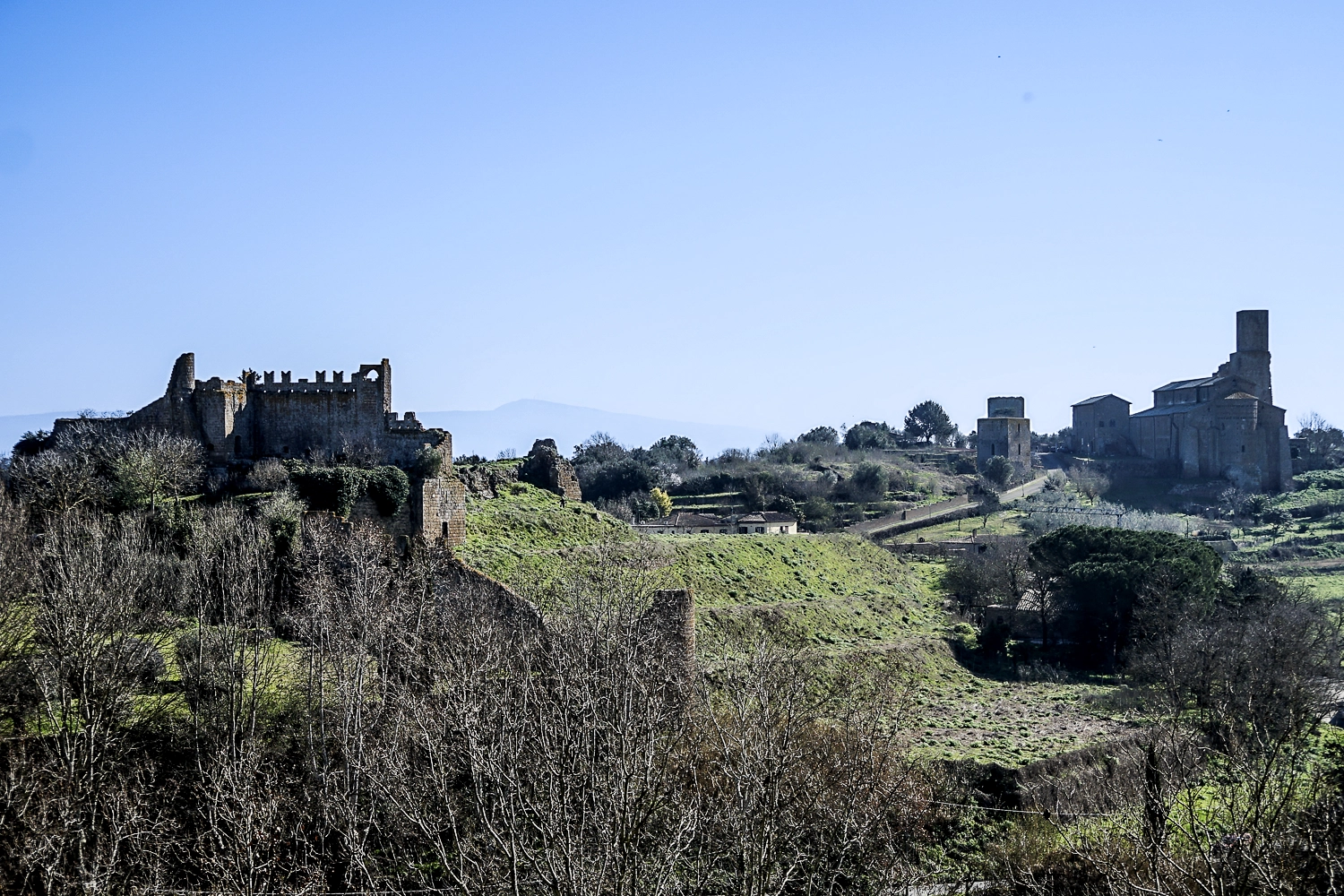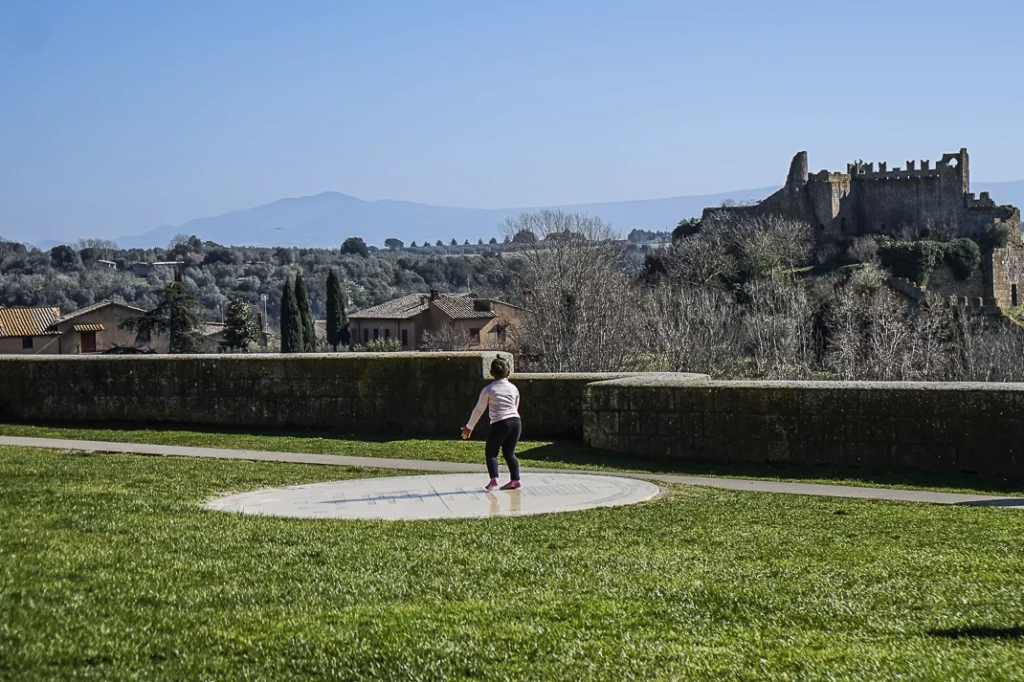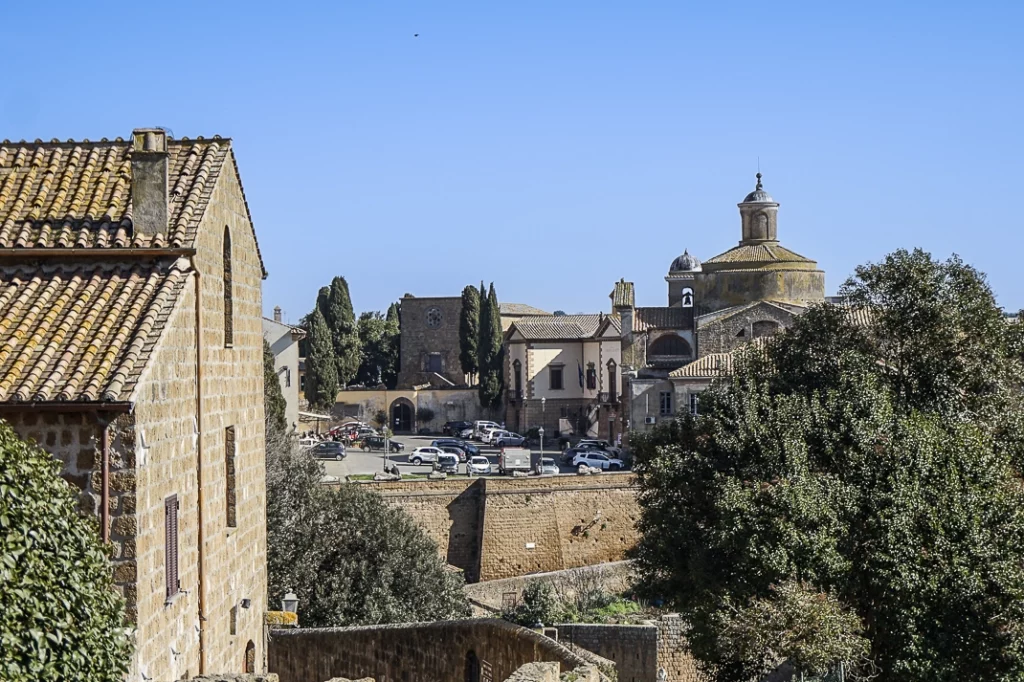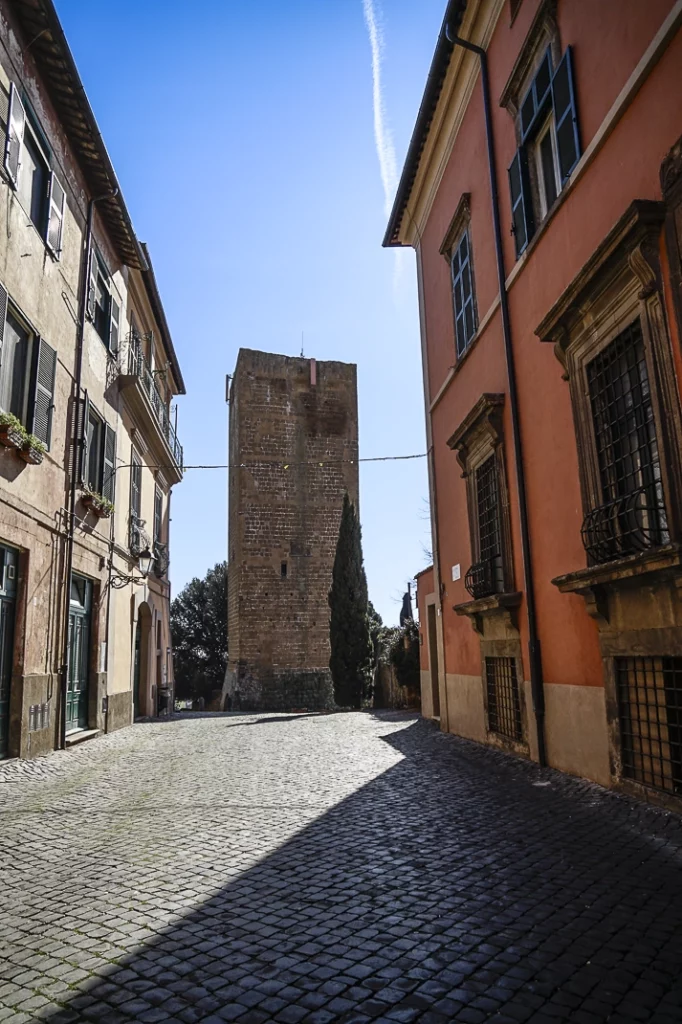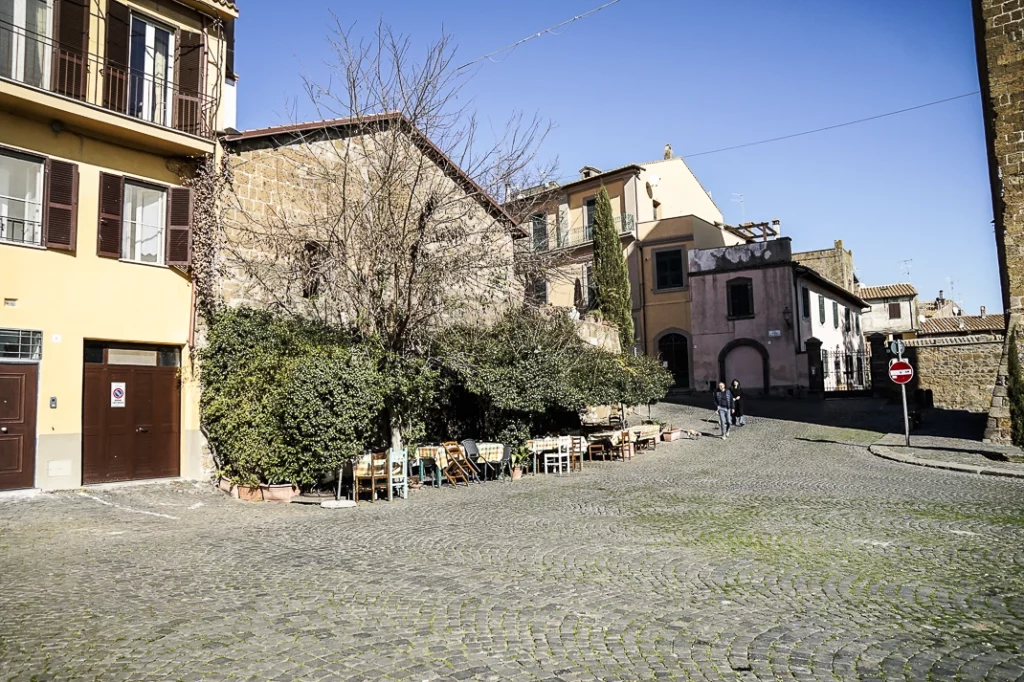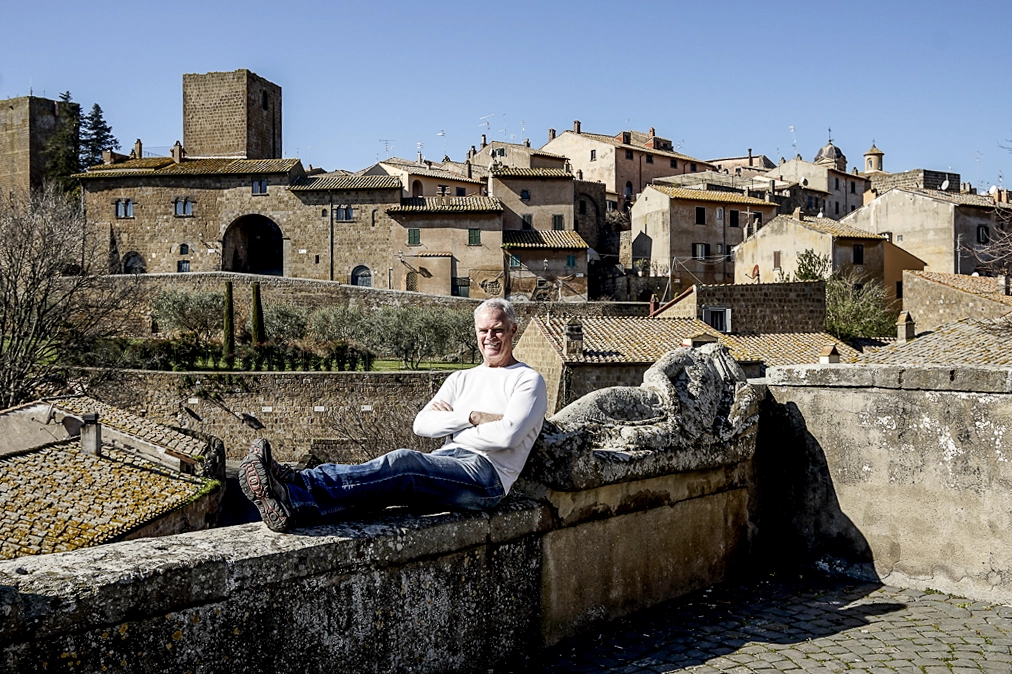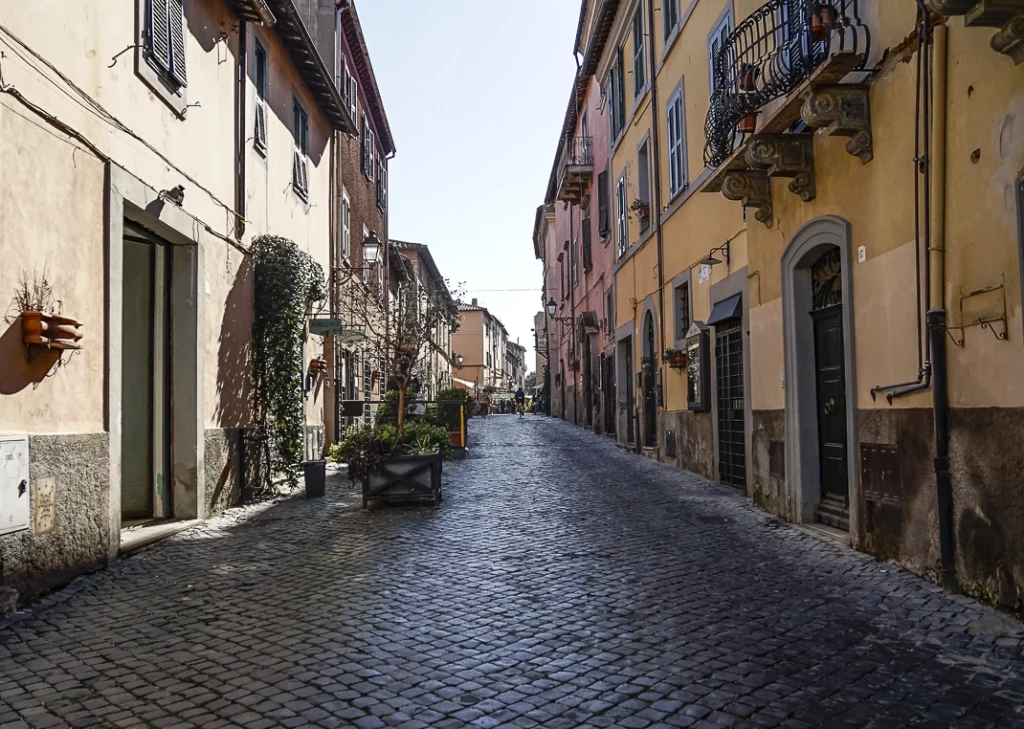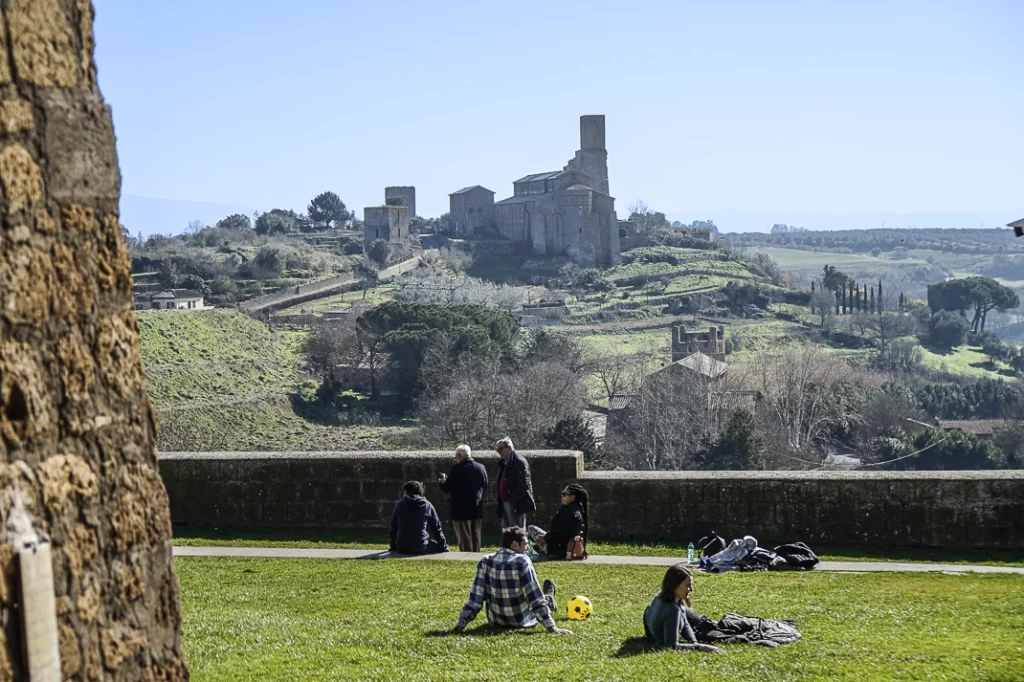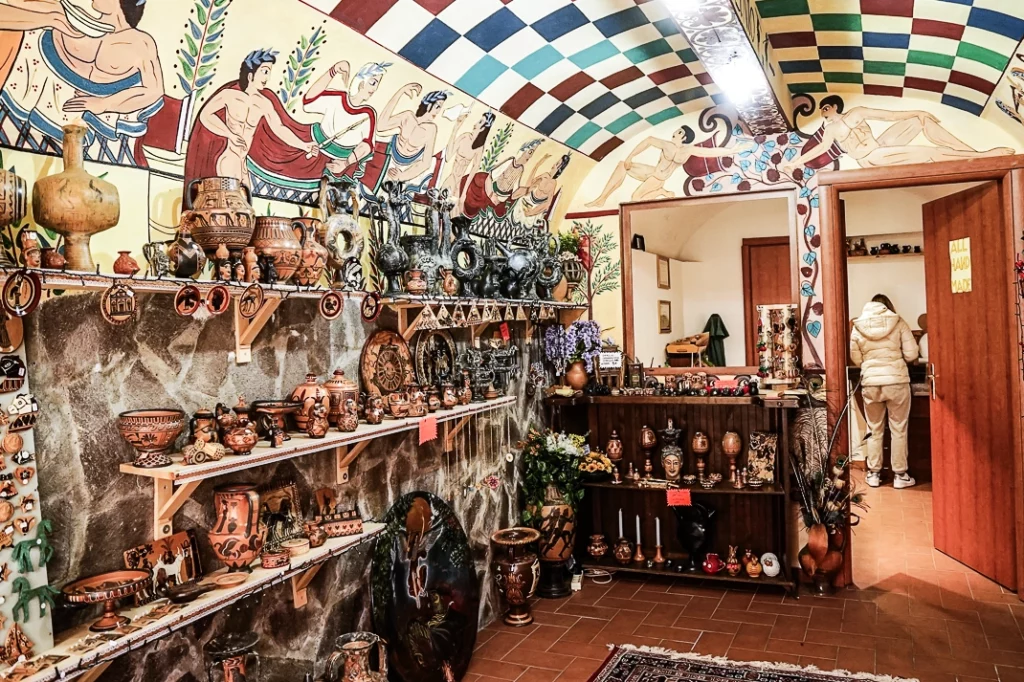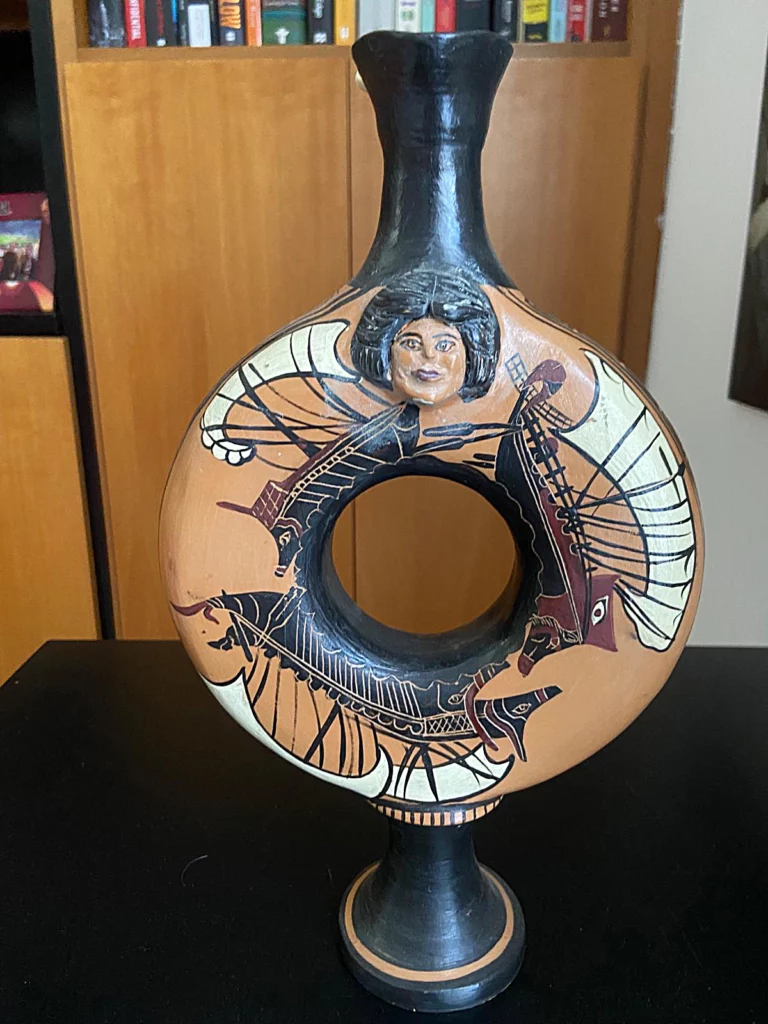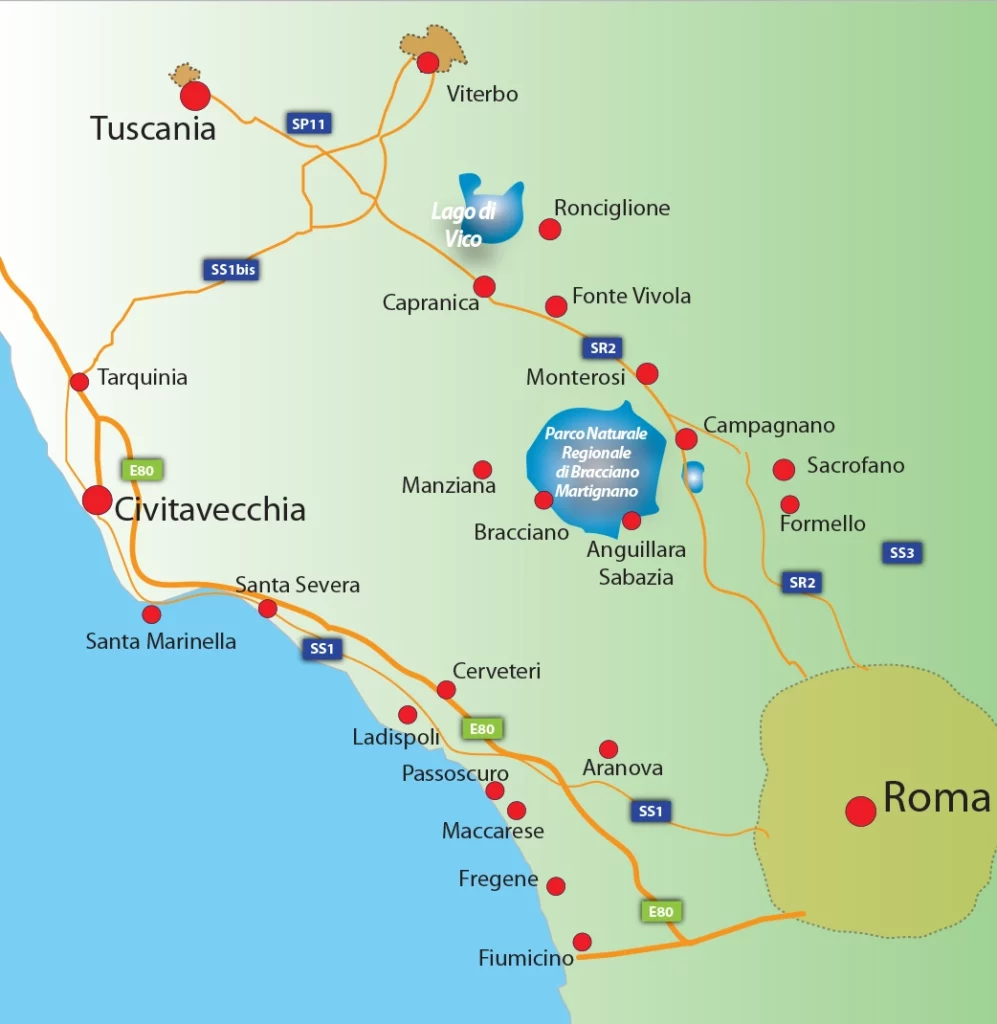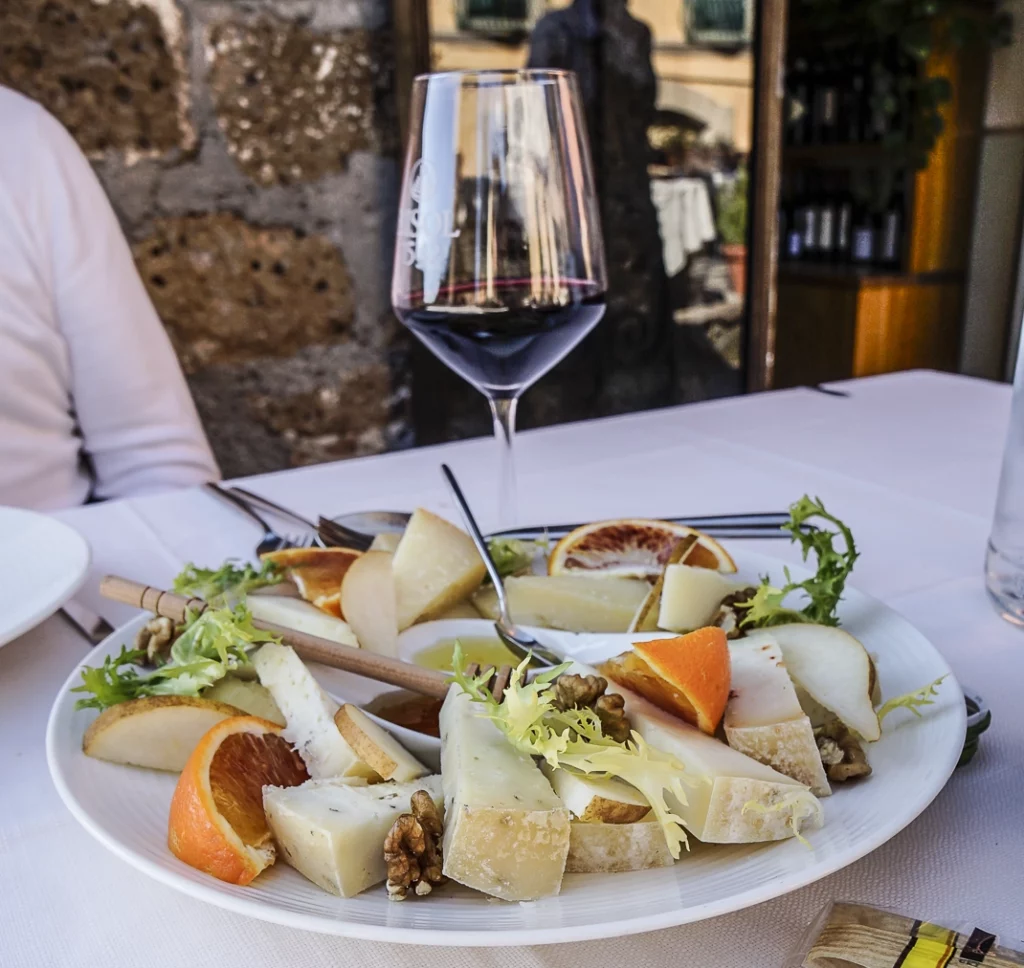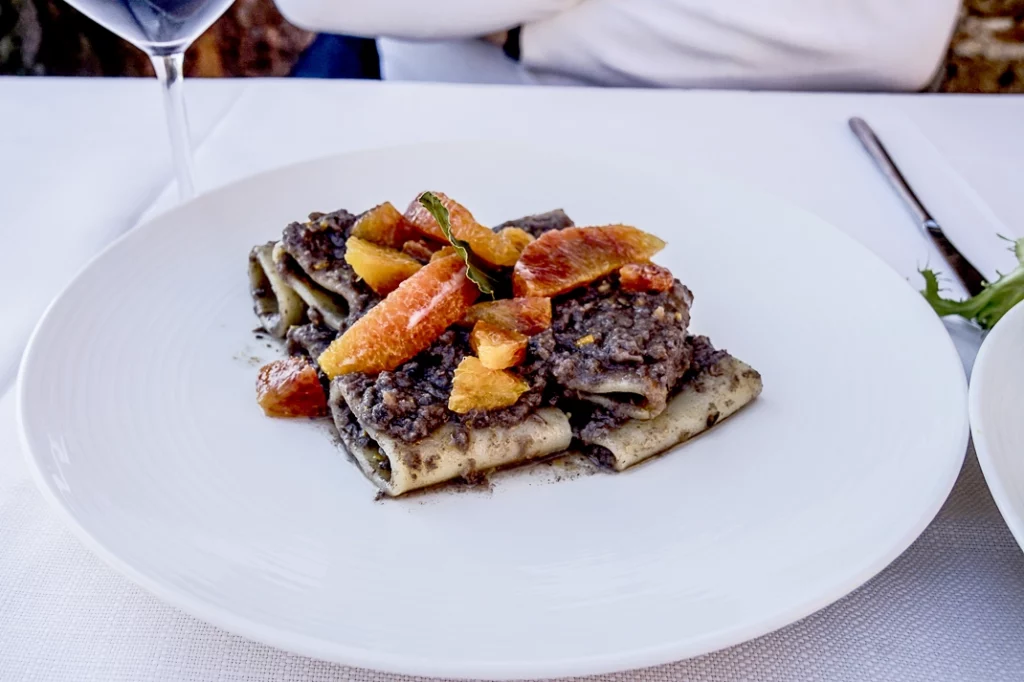Tuscania: Tuscan in name only, it’s an Old Town with a view
The name confuses people. We tell friends we’re going to Tuscania and they think we’re headed to Florence in Tuscany. Nope. Tuscania (pronounced toos-CAHN-ia) is in Lazio. It’s actually 70 miles (130 kilometers) from the Tuscan border and only 50 miles (93 kilometers) northwest of Rome. The name comes from tuscus, the Latin word for Etruscan, Lazio’s early inhabitants who founded the city back in the 7th century B.C.
Today Tuscania (pop. 8,400) is an absolute gem of a stopover on the well-worn tourist route between Rome and Florence. Tuscania’s Old Town dates back to the Middle Ages and sports breathtaking views of the 8th century Church of St. Peter and the 13th century Castello del Rivellino.
Work off fabulous local cuisine in the surrounding national park and the Old Town’s narrow windy roads where you can shop for ceramics in a town famous for them.
Things to do
1 • Old Town. Most Italians have old towns. It figures. Italy is really old. But Tuscania’s is special. You enter a huge archway still standing from the Middle Ages. Walk up the narrow main cobblestone drag of Via Roma and pass little jewelry and ceramic shops.
Coffee shops like Caffe del Duomo have big panes of glass covering cushioned seats. All the buildings are uniform. They’re made from tuft rock, the same material of the hill on which the city was built by the Etruscans.
Go to the end of the road to Torre del Lavello, a tower that hovers over a small park and the countryside, with St. Peter’s and the castle beyond. On a sunny 63-degree day Sunday, we couldn’t have had a better day for strolling and viewing beautiful countryside.
2 • Church of St. Peter’s. Not to be confused with the famous St. Peter’s in the Vatican, this church was built in 739, about 700 years before the Vatican St. Peter’s was restored the first time. Tuscania’s gem is one of the few examples of Lombard-Romanesque architecture in Lazio.
Surrounded by medieval towers and built atop the original town’s acropolis (castle atop a hill), the church’s beautiful facade features a rose window covered in mosaics and decorated with figures from the Old Testament. Inside is a museum of pagan relics.
Info: San Pietro St., 39-347-883-8069, 3-5 p.m.
3 • National Archaeological Museum of Tuscania. Built in an old Francescan convent from 1247, the museum opened in 1988 with four rooms. They include funeral complexes from the Hellenistic Age (4th-2nd century B.C.), ancient ceramics and bronze materials from banquets. In 1997 two rooms opened upstairs.
One houses the history of the convent and the town; the other has remnants from necropolises in the area. The Etruscans buried so many people in sarcophaguses, the museum didn’t have enough room. Thus, you can find many scattered around town, including a string of them lining a stone wall with a view.
Info: Largo Mario Moretti 1, 39-07-61-436-209, https://direzioneregionalemuseilazio.cultura.gov.it/,
drm-laz@beniculturali.it,
8:30 a.m.-7:30 p.m. Tuesday-Sunday, free.
Ceramic City
Italy is famous for its ceramics. We visited Vietri sul Mare, one of the country’s ceramics capitals on the Amalfi Coast, over Valentine’s Day two years ago.
Tuscania has a similar bent but the works are more inside the walls than on them as in Vietri. Tuscania has numerous artists who make beautiful ceramics and sell them in various stores around town. They specialize in Etruscan themes. I stopped at Keramos store of artist Elena Mameli whose father, a farmer, had a deep interest in Etruscan culture.
Elena, with her sister Lucia, use many Etruscan symbols in their work, particularly wildlife such as horses, swans, deer and serpents. I bought a replica of an Etruscan wine bottle, shaped like a giant donut on a stand with a spout on top. Decorated with argonaut boats that Etruscans used to ply the coasts, it’s a true symbol of Tuscania’s Etruscan foundation.
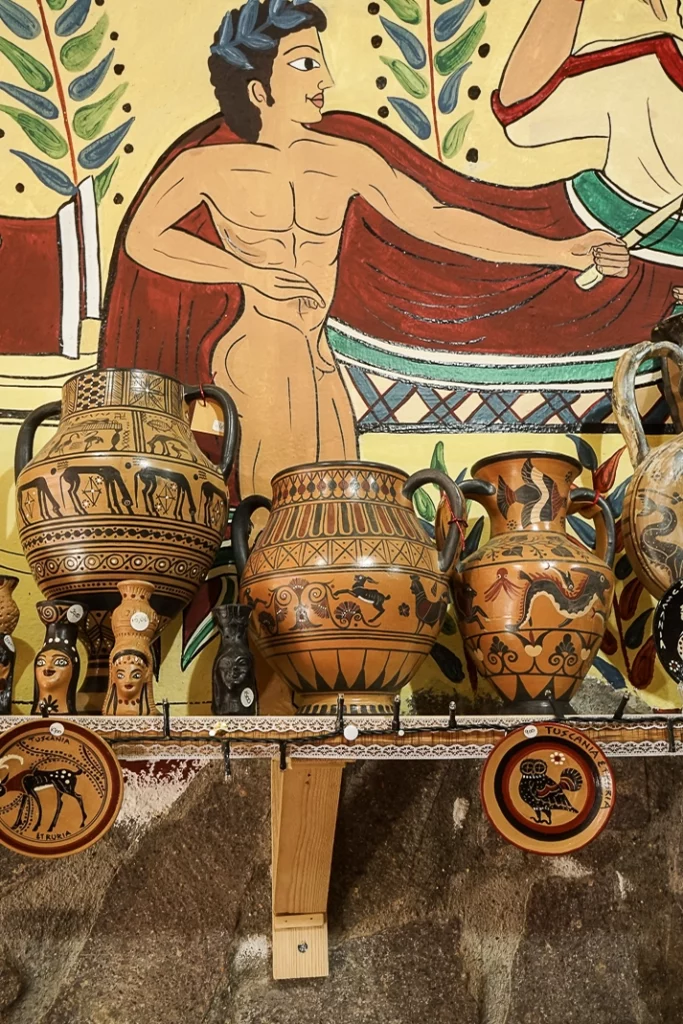
Where to stay
Panoramic Tuscania Hotel, Via dell’Olivo 53, 39-07-61-444-080, https://www.tuscaniahotel.it/en/,
Great views of Old Town and surrounding countryside. Rooms feature local furnishings. Many have balconies with views. Rooms start at €92.
Where to eat:
La Torre di Lavello, Via Torre di Lavello 27, 39-07-61-434-258, noon-11 p.m. Thursday-Tuesday.
Housed in a medieval building, the 23-year-old restaurant is in the shadow of the Torre di Lovello. The outdoor tables have a tremendous view of the countryside and landmark St. Peter’s and castle beyond.
Get the enormous cheese plate served with sliced pears and honey. This national park is a big wild boar hunting area and I had paccheri (wide, flat pasta) al ragù di cinghiale (wild boar) e arancia (orange). The orange added an inviting sweet taste.
Mains start at €12. Lunch for two with wine was €54.
For more information:
Visit Tuscania, Piazzale Trieste, 39-328-887-2377,
https://comune.tuscania.vt.it/uffici/1334497/ufficio-turistico-comunale,
9 a.m.-6 p.m. Friday-Sunday.
